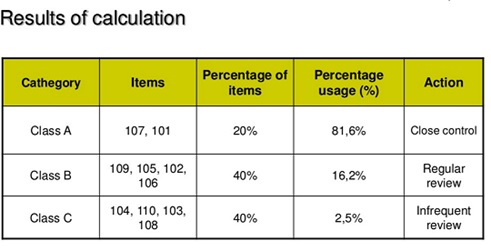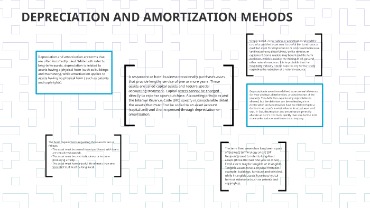
If a problem exists, the totals on the bank statement will exceed the totals per the company records for both receipts and disbursements. It is highly recommended where the volume of transactions and amount of money involved is very large. For smaller companies, it’s common to reconcile bank statements during the monthly or quarterly close process.
What is the approximate value of your cash savings and other investments?
A company prepares a bank reconciliation statement to compare the balance in its accounting records with its bank account balance. A bank reconciliation statement is a valuable internal tool that can affect tax and financial reporting and detect errors and intentional fraud. Reconciling your bank account should be done monthly to catch discrepancies early and keep financial records accurate. Businesses with high volume of transactions must reconcile their bank statements weekly or daily to manage cash flow efficiently. A bank reconciliation is part of the month-end close process, which includes reviewing the company’s balance sheet, income, bank statements, expenses, intercompany trades, and other information. It is essential for maintaining accurate business financial records, which helps in tax filing and gives an overall idea of the company’s finances.
Transform your Record-to-Report processes with HighRadius!
One reason for this is that your bank may have service charges or bank fees for things like too many withdrawals or overdrafts. Or there may be a delay when transferring money from one account to another. Or you could have written a NSF check (not sufficient funds) and recorded the amount normally in your books, without realizing there wasn’t insufficient balance and the check bounced.
Compare your bank statements
However, in the bank statement, such a balance is showcased as a debit balance and is known as the debit balance as per the passbook. The above case presents preparing a bank reconciliation statement starting with positive bank balances. As mentioned above, debit balance as per the cash book refers to the deposits held in the bank. This balance exists when the deposits made by your business at your bank are more than the withdrawals. Nowadays, many companies use specialized accounting software in bank reconciliation to reduce the amount of work and adjustments required and to enable real-time updates. In this case, the reconciliation includes the deposits, withdrawals, and other activities affecting a bank account for a specific period.

After checking all the critical items, adjust the cash balances to account for all expenses and transactions. Check deposits can be challenging for businesses during reconciliation. After receiving a bank statement dated 31 December 20×1 for a checking account at First National Bank, the accountant for Sample Company began the reconciliation process. A liability account on the books of a company receiving cash in advance of delivering goods or services to the customer. The entry on the books of the company at the time the money is received in advance is a debit to Cash and a credit to Customer Deposits. When a company writes a check, the company’s general ledger Cash account is credited (and another account is debited) using the date of the check.
Understanding the Bank Reconciliation Statement

This is done to confirm every item is accounted for and the ending balances match. Deposits in transit are amounts that are received and recorded by the business but are not yet recorded by the bank. For instance, the bank charged your business $30 in service fees, but it also paid you $5 in interest. The easiest way to check for this is to print a check register for the month and compare it to the checks that have cleared the bank. Any checks that have been issued that haven’t cleared the bank must be accounted for under your bank balance column.

He is the founder of the award-winning blog, Family Money Adventure, and host of the Family Money Adventure Show podcast. He has been quoted by publications like Readers Digest and The Wall Street Journal. Kevin’s work has been featured in Bankrate, Credible, CreditCards.com, Fox Money, LendingTree, MarketWatch, Newsweek, New York Post, Time, ValuePenguin and USA Today.
- Bank reconciliation is the process of comparing the balance as per the cash book with the balance as per the passbook (bank statement).
- Service charges may be levied by the bank for regular or special services.
- This can happen if you’re reconciling an account for the first time or if it wasn’t properly reconciled last month.
- Banks send a bank statement to their customers at the end of each month detailing all the transactions that happened in their bank account during the last month.
- Unrecorded differences are amounts that are present in the bank statement but not present in the bank book are known as unrecorded differences.
This practical article illustrates the key points of why a bank reconciliation is important for both business and personal reasons. The second entry required is to adjust the books for the check that was returned from Berson. (a) Deposits made by Sara Loren on 30 May, $1,810, and on 31 May, $2,220, have not been credited to the bank statement. The https://www.online-accounting.net/ service charge was deducted from the reconciliation because no notification had been received about the amount prior to receiving the statement. The accountant should review the outstanding checks with the intention of investigating any extremely old ones. An inquiry should also be made concerning the lack of notification about the NSF check.
However, adjusting entries should be made only as a last resort for small amounts. If you adjust larger amounts, you risk creating issues for the future. Cash management software allows for scalability, making it easy to streamline the reconciliation https://www.business-accounting.net/how-to-find-dropshipping-suppliers-and-wholesalers/ process as the business grows. Standardizing the process with a set of steps to follow for reconciliation can make the process more organized and save time. This can be done by creating a checklist or using a reconciliation software tool.
As mentioned above, bank overdraft is a condition where a bank account becomes negative as a result of excess withdrawals over deposits. This is also known as unfavorable balance as per the cash book or unfavorable balance as per the passbook. Bank reconciliations will help you to spot fraudulent transactions and reduce the risk of transactions that could cause penalties and late fees.
We’ll take bookkeeping completely off your hands (and deal with the bank reconciliations too). For some entrepreneurs, reconciling bank transactions creates a sense of calm and balance. If you’re in the latter category, it may be time to think about hiring a bookkeeper who will do the reconciling for you.
However, the depositor/customer/company credits its Cash account to decrease its checking account balance. However, the depositor/customer/company debits its Cash account differences between trade discounts and cash discounts to increase its checking account balance. To reconcile a bank statement, the account balance as reported by the bank is compared to the general ledger of a business.
If you suspect an error in your books, see some common bank reconciliation errors below. In other words, the adjusted balance as per the bank must match with the adjusted balance as per the cash book. In addition, there may be cases where the bank has not cleared the cheques, however, the cheques have been deposited by your business. Therefore, the bank needs to add back the cheque’s amount to the bank balance. You need to adjust the closing balance of your bank statement in order to showcase the correct amount of withdrawals or the cheques issued but not yet presented for payment.

Leave a Reply